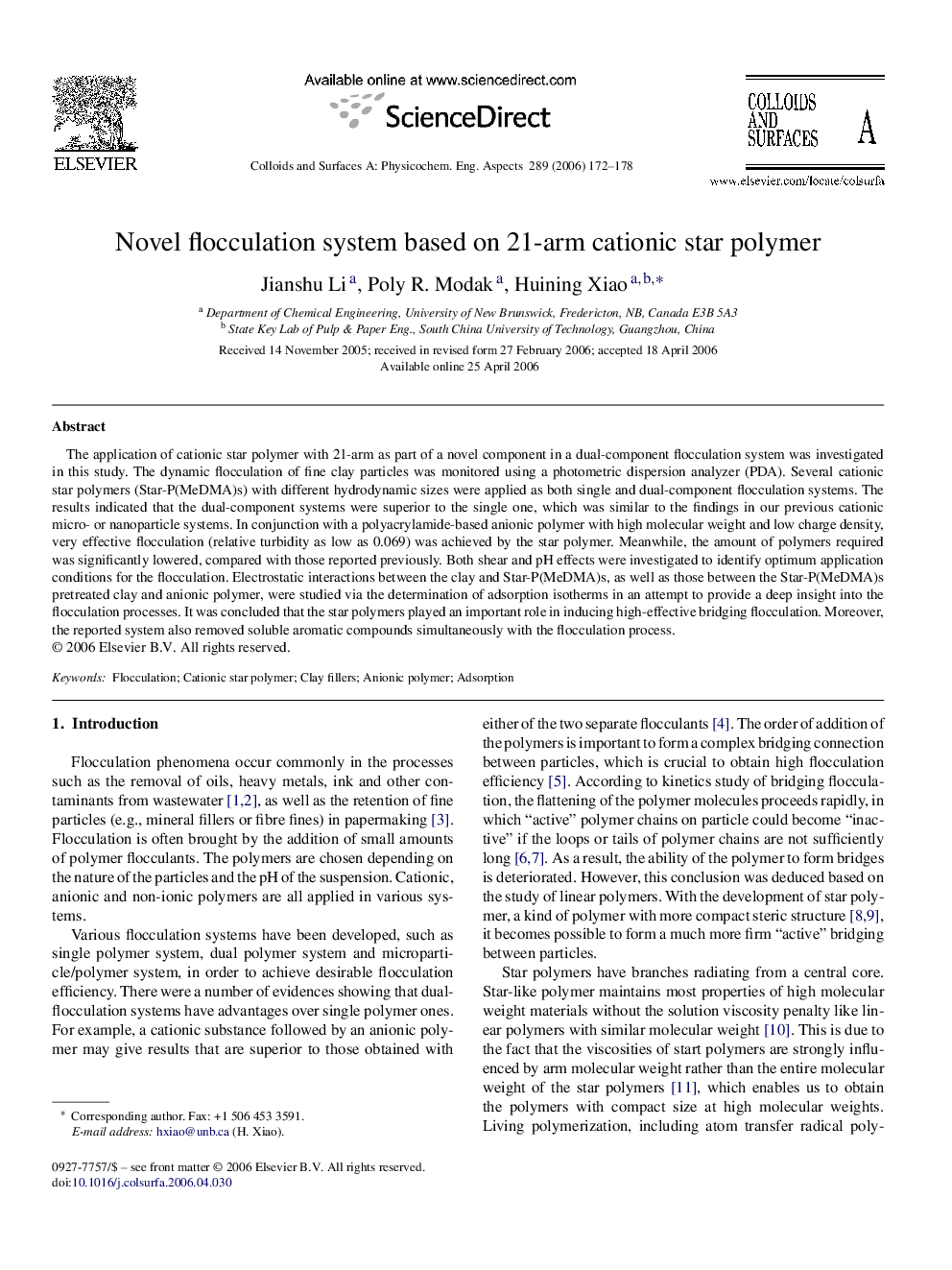| Article ID | Journal | Published Year | Pages | File Type |
|---|---|---|---|---|
| 598146 | Colloids and Surfaces A: Physicochemical and Engineering Aspects | 2006 | 7 Pages |
The application of cationic star polymer with 21-arm as part of a novel component in a dual-component flocculation system was investigated in this study. The dynamic flocculation of fine clay particles was monitored using a photometric dispersion analyzer (PDA). Several cationic star polymers (Star-P(MeDMA)s) with different hydrodynamic sizes were applied as both single and dual-component flocculation systems. The results indicated that the dual-component systems were superior to the single one, which was similar to the findings in our previous cationic micro- or nanoparticle systems. In conjunction with a polyacrylamide-based anionic polymer with high molecular weight and low charge density, very effective flocculation (relative turbidity as low as 0.069) was achieved by the star polymer. Meanwhile, the amount of polymers required was significantly lowered, compared with those reported previously. Both shear and pH effects were investigated to identify optimum application conditions for the flocculation. Electrostatic interactions between the clay and Star-P(MeDMA)s, as well as those between the Star-P(MeDMA)s pretreated clay and anionic polymer, were studied via the determination of adsorption isotherms in an attempt to provide a deep insight into the flocculation processes. It was concluded that the star polymers played an important role in inducing high-effective bridging flocculation. Moreover, the reported system also removed soluble aromatic compounds simultaneously with the flocculation process.
